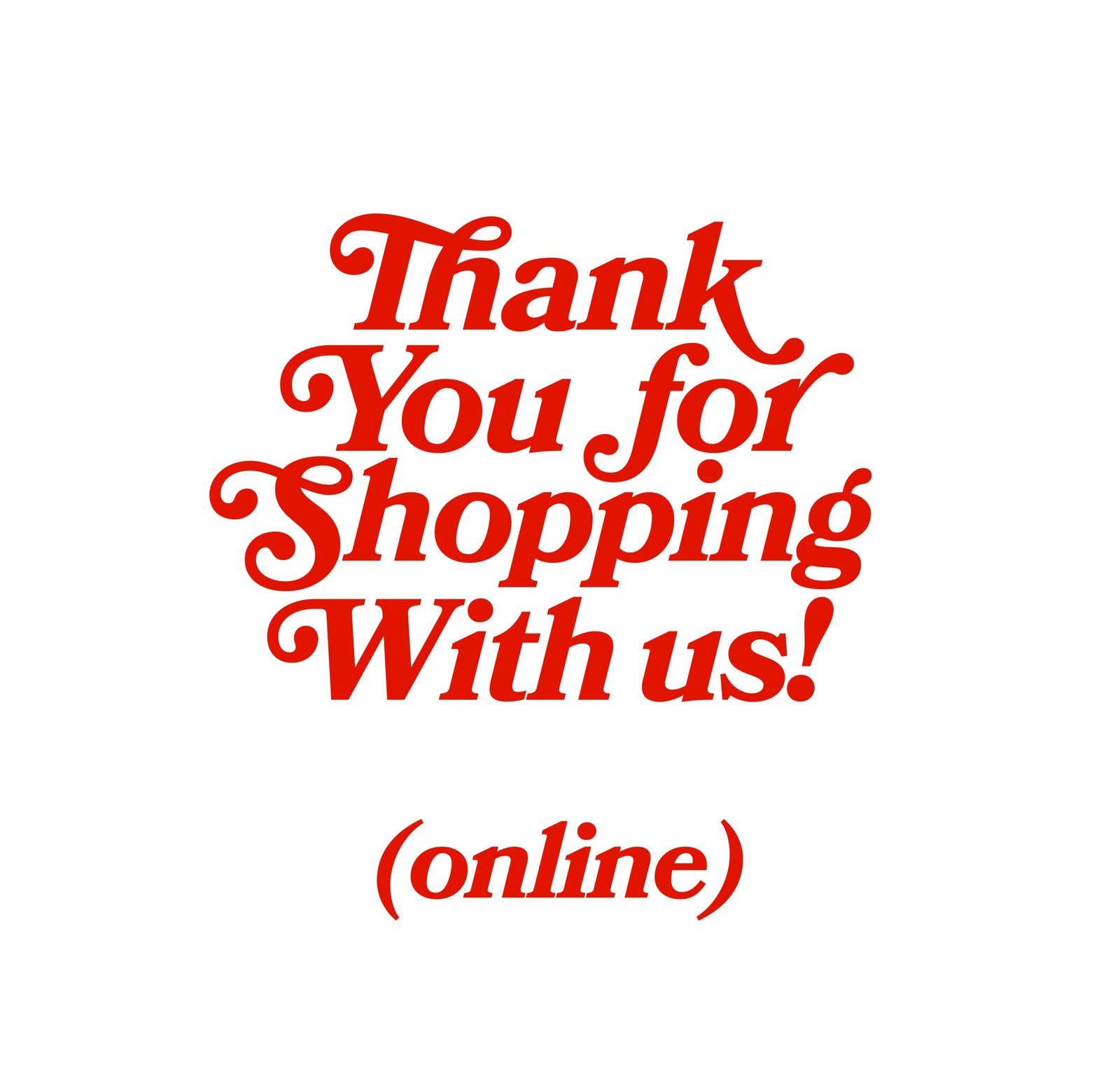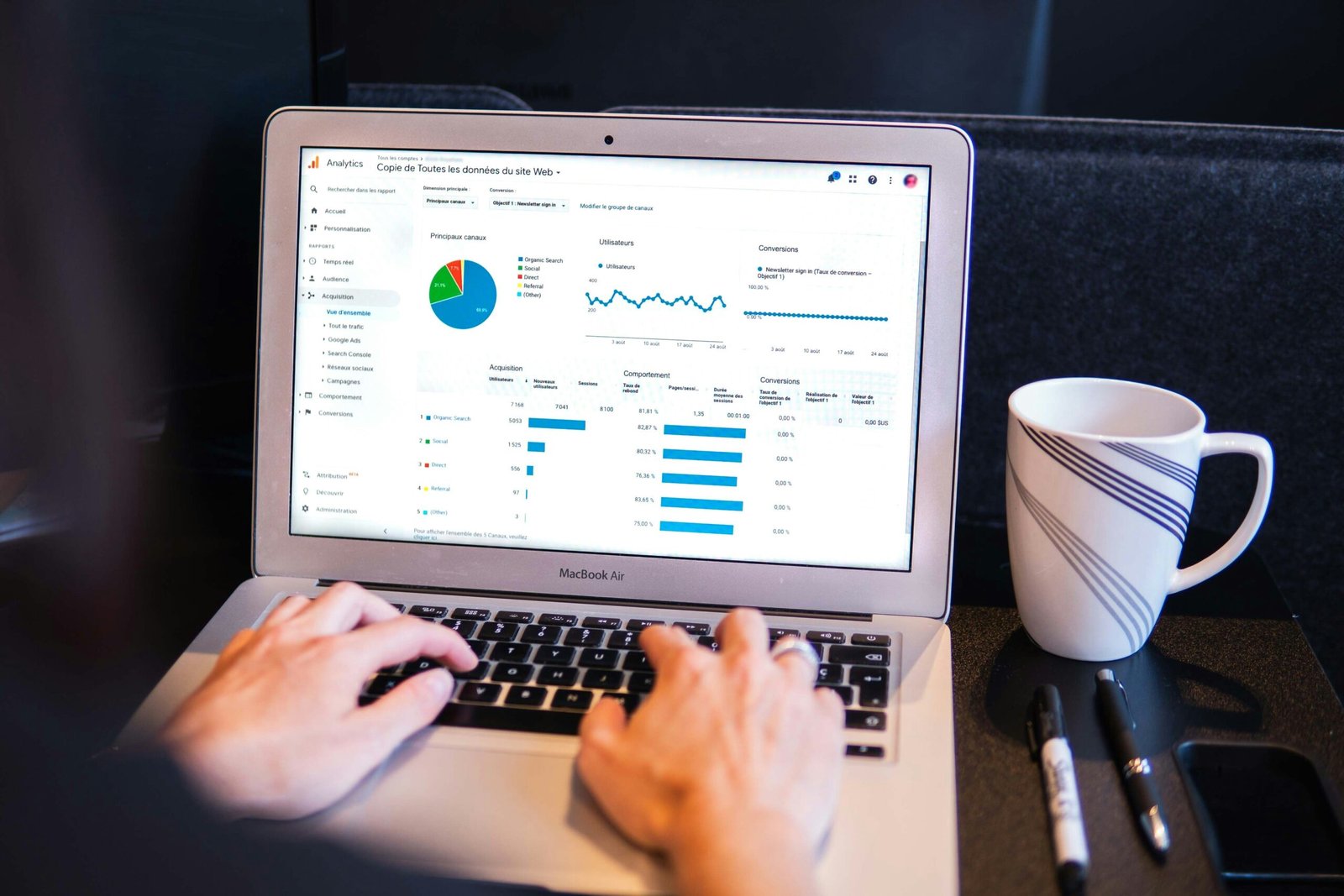Running Your Own B2B E-Commerce E-Newsletter: From Building Your List to Making Sales
Introduction to B2B E-Commerce Newsletters
In the rapidly evolving digital marketing landscape, B2B (business-to-business) e-commerce newsletters have emerged as an essential tool for companies seeking to establish strong connections with other businesses. These newsletters are a strategic medium for sharing valuable content, fostering relationships, and ultimately driving sales. With the rise of digital communication, the role of e-newsletters in enhancing brand visibility and customer engagement cannot be overstated.
B2B e-commerce newsletters serve multiple purposes. Firstly, they enable businesses to disseminate important information about their products, services, and industry trends directly to their target audience. This consistent communication helps in building brand authority, as recipients perceive the business as a source of relevant insights and knowledge. By curating informative content, companies can position themselves as thought leaders, which is vital for trust-building within the B2B sector.
Moreover, e-newsletters facilitate personalized communication. Businesses can segment their audience based on interests, industry, or purchasing behavior and tailor their content accordingly. This targeted approach not only enhances the relevance of the information shared but also improves engagement rates. As recipients are more likely to interact with content that addresses their specific needs, businesses can leverage this strategy to foster deeper relationships and encourage more significant interactions.
Finally, B2B e-commerce newsletters can play a pivotal role in driving conversions. By featuring special offers, product launches, or webinars, these newsletters can prompt recipients to take decisive actions that lead to sales. This seamless transition from information sharing to transactional engagement is a hallmark of effective digital marketing strategies. In summary, launching a B2B e-commerce newsletter is a valuable opportunity for companies to engage with their audience, drive sales, and foster long-term business relationships.
Defining Your Target Audience
Identifying and understanding your target audience is a crucial step in launching a successful B2B e-commerce e-newsletter. Without a clear focus on who your ideal customers are, even the most compelling content may fail to engage and resonate. To effectively define your audience, several techniques can be employed, starting with the creation of buyer personas. These personas are fictional representations of your ideal customers, crafted based on detailed research and insights. By considering factors such as industry, company size, pain points, and buying motivations, you can better tailor your newsletter content and marketing strategies.
Another significant approach is to conduct thorough market research. This research might include surveys, interviews, and analysis of existing data to uncover trends and behaviors within your target market. Understanding the demographics, preferences, and behaviors of potential customers can inform your content strategy and enhance the relevance of your newsletter offerings. Additionally, reviewing competitors’ initiatives can provide insights into what resonates with similar audiences, allowing you to position your own e-newsletter effectively.
Furthermore, segmenting your audience is vital for maximizing engagement and conversion rates. By dividing your target audience into smaller, more specific groups based on attributes such as purchasing behavior, interests, and needs, you can craft tailored messages that speak directly to each segment. This level of personalization fosters deeper connections and increases the likelihood of meaningful engagement.
In conclusion, clearly defining and understanding your target audience through methods like buyer personas, market research, and audience segmentation is essential. These strategies ensure your B2B e-commerce e-newsletter delivers valuable and relevant content, ultimately fostering stronger relationships with your audience and driving sales success.
Building an Engaging Email List
Creating an effective email list tailored for a B2B e-commerce newsletter is the cornerstone of a successful e-marketing strategy. The initial step involves the use of strategically placed signup forms on your website. These forms should be easily accessible and visibly integrated into your site design. By encouraging visitors to subscribe, you increase the likelihood of converting casual browsers into engaged recipients.
Moreover, leveraging social media platforms can greatly enhance your list-building efforts. Share informative content and call-to-action prompts on channels like LinkedIn and Twitter, where many business professionals reside. Directing your audience from your social media profiles to your email signup page not only broadens your reach but also allows for tailored engagement with your prospective customers.
Offering incentives is another effective strategy for attracting subscribers. Consider providing exclusive content, such as e-books, whitepapers, or industry reports, only accessible through newsletter subscription. Additionally, limited-time discounts or offers can motivate potential leads to share their contact information. These incentives not only enhance the value of your newsletter but also establish a rapport with your audience.
Networking opportunities, whether online or offline, can also contribute to a growing email list. Participate in industry conferences, webinars, or trade shows where you can interact with potential subscribers face-to-face. Collecting business cards or offering digital signup options during such events helps expand your reach and establish valuable connections.
Lastly, it is critical to maintain list hygiene and ensure compliance with regulations such as GDPR. Regularly cleaning your email list by removing inactive subscribers and ensuring consent is essential not just for delivering necessary communications, but also for maintaining your brand’s credibility and reputation. An engaged and compliant email list can effectively drive your B2B e-commerce initiatives forward.
Creating Compelling Content
Creating engaging content for a B2B e-commerce e-newsletter is crucial for capturing the interest of your audience and driving conversions. Start by understanding the unique challenges and pain points faced by your target demographic. Conducting surveys or interviews with existing customers can yield valuable insights into their needs and motivations, allowing you to tailor content that addresses these specific issues.
Incorporating industry insights is another effective strategy. This may include trends, statistics, or expert opinions that not only inform your audience but also position your business as a thought leader in the market. By sharing relevant information, you build trust and credibility, which are essential for nurturing relationships with prospective customers.
Case studies are another compelling content format worth considering. By showcasing real-life examples of how your products or services have solved problems for other organizations, you provide tangible evidence of your value proposition. This not only illustrates your offerings’ effectiveness but also allows potential clients to envision similar solutions for their own challenges.
Offering practical tips and resources can further enhance the relevance of your content. This could range from how-to guides, industry best practices, or even downloadable resources such as templates or checklists. These actionable insights enable your audience to derive immediate benefits from your newsletter, thereby increasing the likelihood of engagement and conversion.
Regarding content frequency, consistency is key. Depending on your audience’s preferences, you may opt for a weekly, bi-weekly, or monthly newsletter. Finally, maintain a professional yet approachable tone throughout your content. Striking the right balance helps in fostering a connection with your audience while ensuring the delivery of valuable information that inspires action.
Designing Your E-Newsletter
Creating an effective e-newsletter for your B2B e-commerce business is essential for engaging your target audience and driving conversions. The design of your e-newsletter plays a pivotal role in capturing readers’ attention and ensuring they take the desired actions. Start by selecting a professional template that aligns with your brand’s aesthetic. A well-designed template not only highlights your content but also establishes your credibility as a business. Look for customizable layouts that allow you to incorporate your company’s logo, color scheme, and typography, reinforcing brand recognition.
Mobile responsiveness is another critical design element to consider. With an increasing number of users accessing emails on their smartphones and tablets, it is crucial that your e-newsletter is optimized for smaller screens. This includes ensuring text is legible, images are appropriately sized, and navigational elements are easy to tap. Additionally, responsive design elements will help maintain a professional appearance, regardless of the device used to view your content. Tools and services that preview your e-newsletter in various devices can provide invaluable insights into how your design will perform across platforms.
Clear calls-to-action (CTAs) must also be prominently featured throughout your e-newsletter. These buttons or links guide readers towards important actions, such as visiting your website or signing up for a webinar. You should ensure these CTAs stand out visually, using contrasting colors and strategic placement within your layout. Furthermore, maintaining consistent messaging across your e-newsletter helps reinforce your company identity. It is important to create a cohesive narrative that resonates with readers, integrating your core values and tone throughout your content. This approach not only enhances user experience but also fosters trust and loyalty among your subscribers.
Automating Your Newsletter Campaigns
Automation is pivotal in streamlining the efficiency of your B2B e-commerce e-newsletter campaigns. Leveraging robust tools and platforms that facilitate automation can yield significant improvements in managing your subscriber lists, sending newsletters, and tracking performance metrics. Automation not only saves valuable time but also enhances the overall effectiveness of your communication efforts. This is particularly crucial in a competitive e-commerce landscape where timely, relevant communication can lead to increased engagement and conversion rates.
Several notable platforms, such as Mailchimp, HubSpot, and Constant Contact, provide comprehensive automation features that enable users to set up welcome emails for new subscribers, schedule newsletters, and execute follow-up sequences seamlessly. These systems allow for the segmentation of your audience, ensuring that tailored messages reach the right recipients at optimal times. By using automation to personalize content based on subscriber behavior and preferences, B2B businesses can foster stronger relationships with their audience.
Additionally, automated re-engagement campaigns can effectively win back dormant subscribers. For example, setting up a series of reminder emails targeted at inactive subscribers can spark renewed interest and potentially drive sales. Implementing these automated strategies not only enhances user experience but also assists in maintaining a clean and updated subscriber list.
Moreover, tracking performance metrics becomes more manageable with automation. Most platforms offer real-time tracking and reporting, allowing marketers to assess open rates, click-through rates, and overall engagement levels with relative ease. This data is invaluable, as it informs future strategies and optimizations to enhance the newsletter’s effectiveness. By automating these processes, B2B e-commerce companies can focus on creating high-quality content while ensuring that their communications are timely, relevant, and engaging.
Analyzing Newsletter Performance
In today’s competitive B2B e-commerce landscape, understanding the performance of your e-newsletter campaigns is crucial for optimizing communications and driving sales. Successful newsletters are not only about sending information; they require careful analysis of how recipients are engaging with the content. Key performance indicators (KPIs) such as open rates, click-through rates, and conversion rates provide valuable insights into the effectiveness of your campaigns.
Open rates indicate the percentage of recipients who opened the e-newsletter and serve as a primary measure of the effectiveness of your subject lines. A low open rate may suggest that your subject lines need improvement. Click-through rates offer insight into how well the content resonates with the audience; this metric measures how many recipients clicked on links within the newsletter. A higher click-through rate signals that the content is engaging and relevant to your target market.
Conversion rates are perhaps the most critical KPI, as they reflect the percentage of recipients who completed a desired action, such as making a purchase or signing up for a webinar. Monitoring conversion rates helps determine the overall success of the e-newsletter in achieving its specific goals. By analyzing these KPIs, you can identify strengths and weaknesses within your content and strategy.
To collect and analyze this data efficiently, utilizing analytics tools is essential. Tools like Google Analytics and email marketing platforms provide in-depth reporting features that allow you to track your KPIs. Be sure to segment your audience to understand different responses based on customer demographics and behaviors. This approach will help refine your content and strategy, ultimately leading to improved performance in your e-newsletter campaigns.
Through continuous evaluation and data-driven adjustments, e-newsletter campaigns can be optimized for higher engagement and better sales outcomes.
Integrating Sales Strategies
Integrating effective sales strategies within your B2B e-commerce e-newsletter is essential for not only promoting your products but also fostering a deeper connection with your audience. To achieve this, one must focus on a few key approaches that balance promotional content while ensuring readers remain engaged and informed.
Firstly, promoting products should be done strategically. Instead of bombarding readers with numerous sales pitches, select a limited number of key products or services to highlight in each edition. This focused approach allows for a clear message and helps maintain readers’ interest. Incorporate visuals, such as high-quality images or informative graphics, alongside brief descriptions that emphasize the value and benefits of the featured offerings. By presenting items in a thoughtful manner, you cater to the audience’s needs while reinforcing the relevance of your products to their business operations.
Next, consider offering exclusive deals or promotions specifically for e-newsletter subscribers. This tactic not only incentivizes sign-ups but also enhances reader loyalty, making them feel valued. Exclusive discounts, early access to new products, or limited-time offers can stimulate interest and drive conversions. Clearly communicate these offers within the e-newsletter, ensuring they stand out, perhaps using bold text or distinct sections to catch attention. These strategies create urgency and encourage immediate action from your audience.
Additionally, storytelling can be a powerful tool in connecting your offerings with your audience’s needs. By sharing success stories or case studies that highlight how your products have solved real business challenges, you not only demonstrate the effectiveness of your solutions but also engage readers on a personal level. This narrative approach makes your newsletter relatable and reinforces the idea that your offerings contribute meaningfully to your audience’s success.
Ultimately, integrating sales strategies within your B2B e-commerce e-newsletter should feel natural and unobtrusive. By promoting strategically, offering exclusive deals, and utilizing compelling storytelling, you can create a powerful sales vehicle that resonates with your readers while maintaining their interest over time.
Maintaining Engagement and Growing Your List
To maintain engagement with your subscribers, it is essential to focus on providing valuable content that resonates with their needs and interests. Regularly analyze subscriber behavior and preferences by utilizing analytics tools. This data allows you to tailor your e-newsletter content to better align with the expectations of your audience. Offering exclusive insights, industry news, and useful resources can significantly enhance subscriber retention and engagement.
Nurturing relationships with your subscribers is crucial for long-term success. Encourage two-way communication by soliciting feedback through surveys or polls. This not only demonstrates that you value their opinions but also provides insights that can help improve your offerings. Implementing subscriber feedback can lead to increased loyalty and higher engagement rates. Furthermore, consider segmenting your email list based on subscriber behavior or preferences, allowing for more targeted content delivery.
Re-engagement strategies are important to address inactive subscribers. Regularly assess the activity level of your subscribers and identify those who may benefit from additional interaction. A targeted campaign can be implemented aimed at this audience, featuring special offers, personalized messages, or compelling content that reignites interest. Additionally, it may be beneficial to remove consistently inactive subscribers after multiple outreach attempts to maintain a healthy list.
Consistency is key in maintaining engagement; develop a regular schedule for your e-newsletter distribution to set expectations for your audience. Paired with adaptability, as your business and audience evolve, these practices will ensure your content remains relevant and engaging. Utilize seasonal themes, special promotions, or relevant trends to keep your content fresh and appealing. By following these strategies, you can effectively grow your email list and sustain meaningful engagement with your subscribers.







